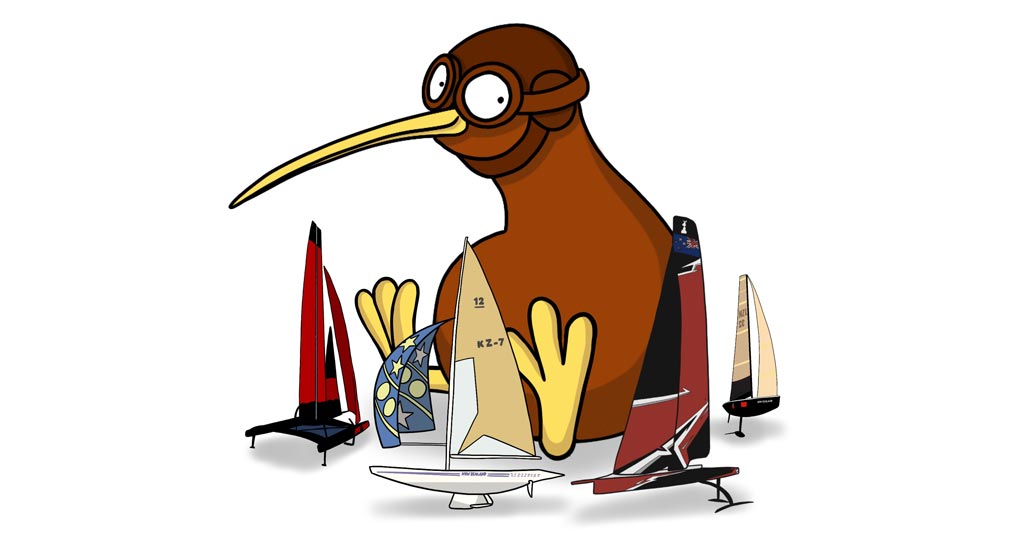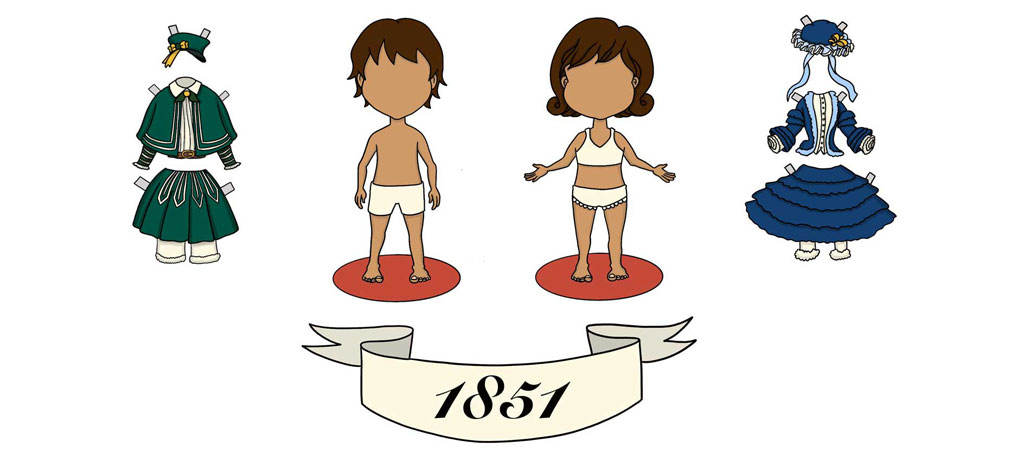
Want to see more highlights of the history of Team New Zealand and the America's Cup? Then check out these videos!

Want to see more highlights of the history of Team New Zealand and the America's Cup? Then check out these videos!
Right from the very first challenge in 1987, New Zealand's innovative designs have pushed the bounds of what's possible, with remarkable success!
When designing yachts, it's a fine line between speed and reliability, and this time innovation was pushed too far.
Here was the chance for Kiwi designers to really think outside the box. It was the first time where catamarans flew on foils, and Team New Zealand came agonisingly close to lifting the Cup.
Team New Zealand travelled to Bermuda with unfinished business, and a secret weapon: instead of grinders they had cyclists!
Imagine you were on the beach in 1851 watching the very first race for the America's Cup. What clothes would you be wearing? Since you were at a yacht race, you were probably rich so your parents would follow all the latest fashions from Paris. That means you could be wearing these outfits. (There's a lot of lace - for girls and boys!)

Over the 170 years of the America's Cup, fashions have changed. What were fashionable kids your age wearing in 1911? And 1951? And what do you think kids will be wearing 30 years from now?

When it comes to choosing clothes to wear in a yacht race, a sailor's top priority is to stay dry and warm. Back in 1851, wool was the fabric of choice because of its warmth, and its fibres are naturally covered in a moisture-repelling oil called lanolin. Sailors also wore oilskin coats - originally made from old canvas sails painted in a mixture of linseed oil and wax. These days, just as the design of their yachts has been transformed, so have the sailor's clothes. What were sailors wearing on the AC75? How did the high tech fabrics keep them warm and dry?

On Christmas eve of 1994, the head of Team New Zealand, Sir Peter Blake, was given a pair of red socks which he wore to victory in the first America's Cup race in San Diego. On one occasion when he was injured, there were no red socks on board, and the black boat lost. So the rest of the crew started wearing red socks and continued to win. To show their support for the challenge, New Zealanders, from the prime minister to bus drivers and even the elephant at Auckland Zoo, all started wearing red socks. Sales of red socks raised half million dollars for the Team New Zealand campaign.
Imagine you are in charge of getting the whole of New Zealand to support Team New Zealand. Can you think of a simple way that the country could show their support? Could it be by wearing special clothing? Perhaps you could write your own waiata or haka to sing when Team New Zealand is about to start a race? Or maybe you could compose a karakia for the protection of our sailors?
What sets the America's Cup apart from every other major sporting event is that once you win it, you get to make the rules. And for 170 years, the winners have been writing rules that make it nigh on impossible for anyone else to prise the Cup out of their grasp. So get a group together and play a game, it could be anything from snakes and ladders to tag. But the winner then gets to change the rules for the next game. Do the rule changes mean the winner keeps on winning? Or are their unforeseen loopholes? Do you think the rule changes are fair?
The last 170 years have seen some extraordinary changes to the design of America's Cup yachts. To give you some idea of just how much things have changed - complete the Yacht Dimensions Worksheet below. Then go outside to a football field, and using one large pace as the equivalent of one metre, mark out the size of the yachts to get a sense of just how big they really are.
One of the rules of the America's Cup is that every boat must be designed and built in the country it represents. For a long time this gave America a huge advantage. All its challengers had to build boats strong enough to sail across the Atlantic to enter the race, usually at the cost of speed.
In 1956 the rule was changed. Now boats don't have to sail across the world to the race course, they can be carried on bigger boats, or more recently, truly gigantic planes.
In September 2020, challenger yachts flew to New Zealand inside the bellies of one of the world's largest cargo planes: the Antonov AN-124. To give you some idea of just how big the plane is - complete the Plane Dimensions Worksheet below, matching the dimensions to smaller planes seen in the skies of New Zealand. Then go outside to a football field, and using one large pace as the equivalent of one metre, mark out the size of the aeroplanes to get a sense of just how big they really are.